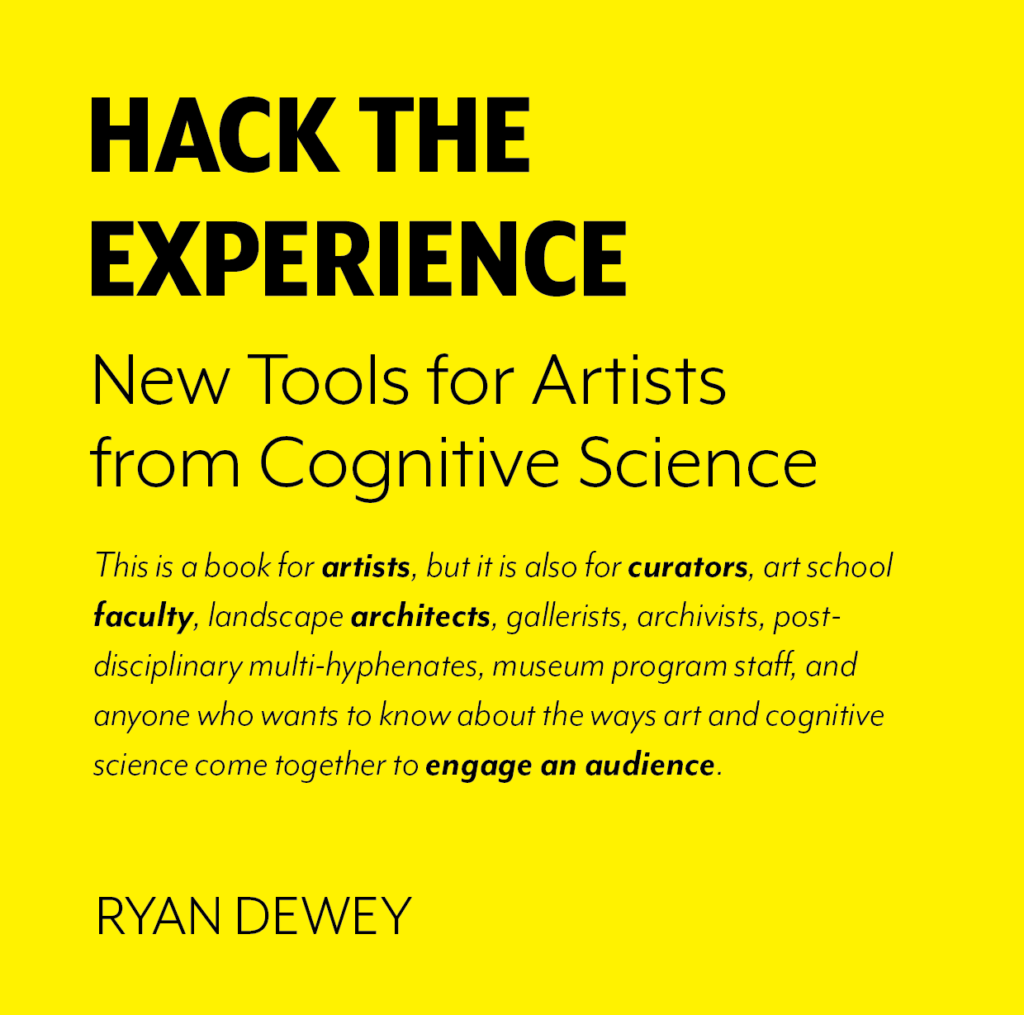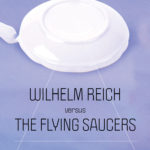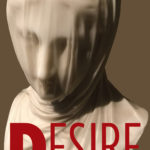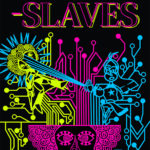Hack The Experience will reframe your perspective on how your audience engages your work. This will happen as you learn how to control attention through spatial and time-based techniques that you can harness as you build immersive installations or as you think about how to best arrange your work in an exhibition. You’ll learn things about the senses and how they interface with attention so that you can build in visceral forms of interactivity, engage people’s empathetic responses, and frame their moods. This book is a dense bouillon-cube of techniques that you can adapt and apply to your personal practice, and it’s a book that will walk you step-by-step through skill sets from ethnography, cognitive science, and multi-modal metaphors.
The core argument of this book is that art is a form of cognitive engineering and that the physical environment (or objects in the physical environment) can be shaped to maximize emotional and sensory experience. Many types of art will benefit from this handbook (because cognition is pervasive in our experience of art), but it is particularly relevant to immersive experiential works such as installations, participatory/interactive environments, performance art, curatorial practice, architecture and landscape architecture, complex durational works, and works requiring new models of documentation. These types of work benefit from the empirical findings of cognitive science because intentionally leveraging basic human cognition in artworks can give participants new ways of seeing the world that are cognitively relevant. This leveraging process provides a new layer in the construction of conceptually grounded works.
Experiences Addressed:
- sensory experiences (haptic, visual, auditory, olfactory, gustatory)
- emotional cueing through materials and environments
- performance and durational works
- cross-modal/cross-sensory experiences (artificial synesthesia)
- path-based experiences, belief, and narrative design
- transformational experiences and socially engaged practice
- rhetorical disorientation, remoteness, oceanic feeling
- environmental works
This is a book for artists, but it is also for curators, art school faculty, landscape architects, gallerists, archivists, post-disciplinary multi-hyphenates, museum program staff, and anyone who wants to know about the ways art and cognitive science come together to engage an audience.





How do we buy this?? would love to use this for dissertation research!!!
This title is currently in production and we aim to have it available in March / April. Once the book is published, buttons will appear on this page that will allow you to either purchase a paperbound edition or to download the PDF e-book.
I also would love to purchase this book! So interesting topic! Can’t wait
any updates?
We are finalizing the proofs currently, and this title will be released within the next several weeks or so.
I am looking forward to owning a copy of this book. Please keep me posted once it is available.
I am interested in getting a copy of this book. When will it be published?
Tuesday, September 4th!
Happy first birthday to this book!
(ノ°◡°)ノ ┌iiii┐ ♪♬